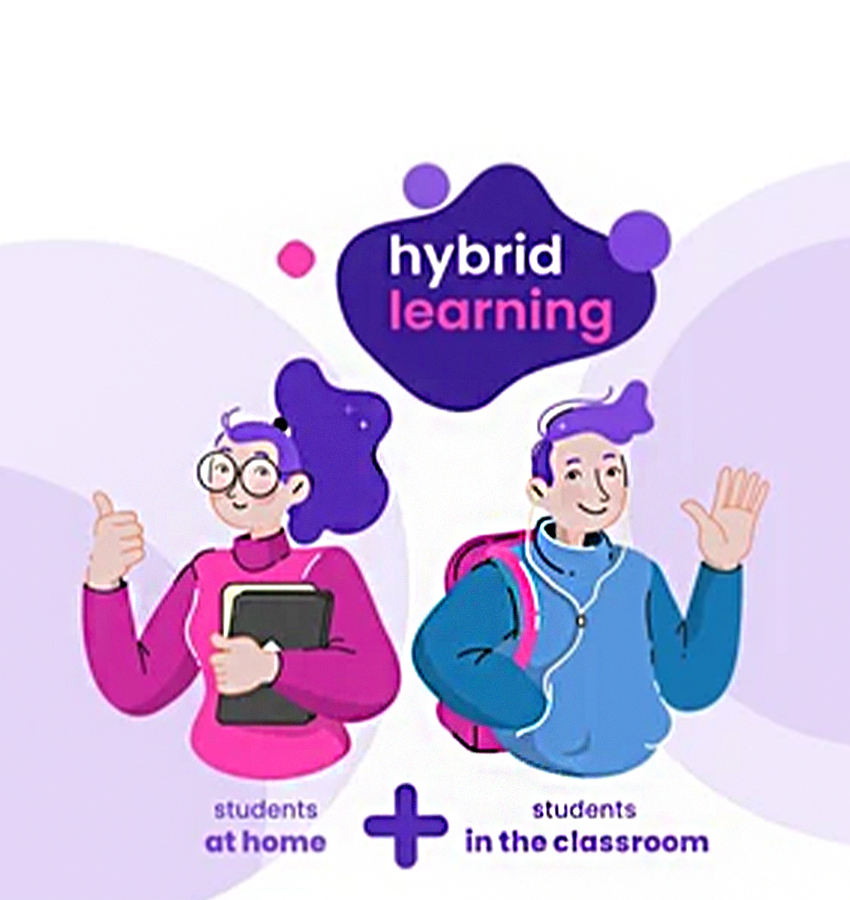
The evolution of Learning
Since modern eLearning first became available in the late 1990s. It has progressed in leaps and bounds in content sophistication and delivery technologies to make learning accessible to ever-wider populations around the globe. This runs the entire gamut of possibilities. From free educational videos on social media platforms to formal lessons and even entire degree programs offered by top universities via eLearning modes. In this blog let’s examine the Importance of Hybrid E-learning
However, even as eLearning became more sophisticated. It became apparent that the “human” element of learning is hard to achieve through eLearning. Face-to-face interaction, hands-on collaborative learning, and real-time feedback are generally superior in classroom environments. Increasingly, schools, corporate training programs and universities have begun adopting a more “Blended” or “Hybrid” style of teaching.
A bouquet, not a rose!
Hybrid learning is really a collective term for all sorts of combinations of computer-assisted learning and classroom learning. Even as institutions and L&D managers adjust to the post-Covid New Normal, four main varieties of Hybrid learning have emerged:
- Flipped Classroom: In this model students watch videos or tutorials for a topic before coming to class. This allows more class time to be dedicated to discussions, exercises, and collaboration. This model is a clever way to leverage the greater engagement of audio-visual content over books while retaining the “Study and come to class prepared” philosophy.
- Rotation Model: Here students spend a part of their time in class, and the other completing online assignments or attending online lectures/lessons. This model lends itself to adjustment and modification. For example, in one variation a cohort is divided into sections which attend classroom sessions in turn and learn remotely the rest of the time. Another variation offers a blend of online and offline content to the entire class. In all cases, this model improves teacher-student ratio and improves peer interaction. Consequently course design can be optimized to reduce class sizes and keep costs low without compromising learning quality.
- Flex Model: This model puts a lot of control in students’ hands, so they choose when to attend class and when to learn remotely. For example, an art student may choose to complete an assignment on her iPad and submit it remotely. But may want space in the studio to learn a new technique or observe a model. A variation on this model also limits classroom attendance opportunities so students can decide what they definitely want to learn in person. This encourages proactive engagement and a more motivated student.
- Online Lab: As the name suggests, students attend labs and hands-on learning sessions in person, while completing other assignments through eLearning. This is almost a necessity in certain courses like medicine and chemistry, but also lends itself well to other types of activities, such as field training. One variation of this model flips it: labs are done online through simulations, while instruction is in-person. This works well for courses like Web Design, Business, etc.
The Benefits
Whatever the model chose. Hybrid learning combines the benefits of online/computer-aided instruction and classroom interactions. While accommodating a greater variety of learning styles. A paper published in the UK in 2022 which analyzed over 1300 studies and their conclusions found that in over 80% of the cases. Blended learning yielded better engagement and participation. As well as test outcomes in K-12, college, and corporate learning scenarios.1
The Future
A Forbes article from 2022, citing a survey of over 2500 college students from around the world including the US stated 82% of the respondents wanted their college experience to include hybrid learning. The verdict is clear- students value the flexibility and self paced learning from an eLearning experience. But also value their in-class learning experience.
Conclusion
As technology gets more sophisticated with the growth of Web3 and online interactions become more realistic. The hybrid learning model will continue to evolve. In developing economies like India, Turkey, Kenya, etc. Hybrid learning could be the way to upskill huge numbers of young people with quality education at lower costs. As with many things in the post-Covid New Normal, Hybrid Learning is here to stay and grow well into the future.



